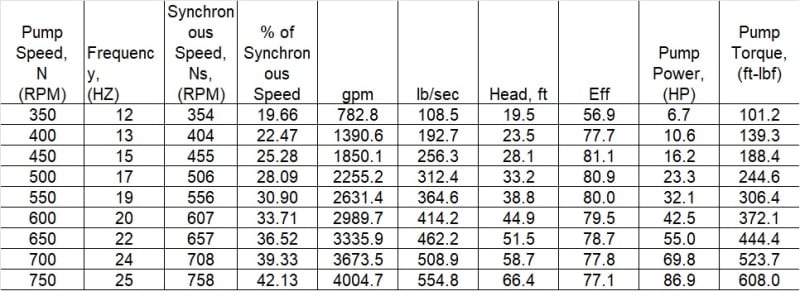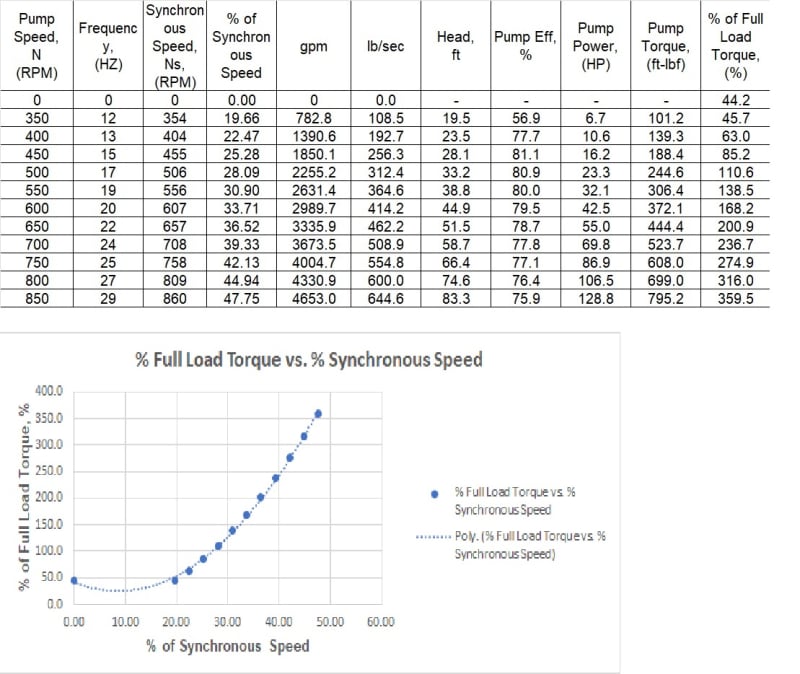Pavan Kumar
Chemical
Hi All,
I have sized a Cooling water pump and determined a 75 HP. Our plant inventory has a 75 HP motors rated for 1780 RPM. I have the motor's Torque vs. speed curve, as attached. I want to calculate the pump's required Torque vs. speed curve and overlap it with the motor's Torque vs. speed as suggested in the link below in order to make a correct motor selection. The motor will be operated with a VFD and I would need to a speed of 641 RPM to get my duty point.
1. I want to know how I calculate the plot the pump torque vs. speed curve. Please suggest me reference material that I can read and work out of.
2. I want to know how the VFD will affect the motor selection and as it would affect the Torque generated by the motor?.
3. I want to know if the motor torque as suggested in the link above is above the pump torque curve until the full load speed then is it ok to say the selected motor is good enough?.
Thanks and Regards,
Pavan Kumar
I have sized a Cooling water pump and determined a 75 HP. Our plant inventory has a 75 HP motors rated for 1780 RPM. I have the motor's Torque vs. speed curve, as attached. I want to calculate the pump's required Torque vs. speed curve and overlap it with the motor's Torque vs. speed as suggested in the link below in order to make a correct motor selection. The motor will be operated with a VFD and I would need to a speed of 641 RPM to get my duty point.
1. I want to know how I calculate the plot the pump torque vs. speed curve. Please suggest me reference material that I can read and work out of.
2. I want to know how the VFD will affect the motor selection and as it would affect the Torque generated by the motor?.
3. I want to know if the motor torque as suggested in the link above is above the pump torque curve until the full load speed then is it ok to say the selected motor is good enough?.
Thanks and Regards,
Pavan Kumar



